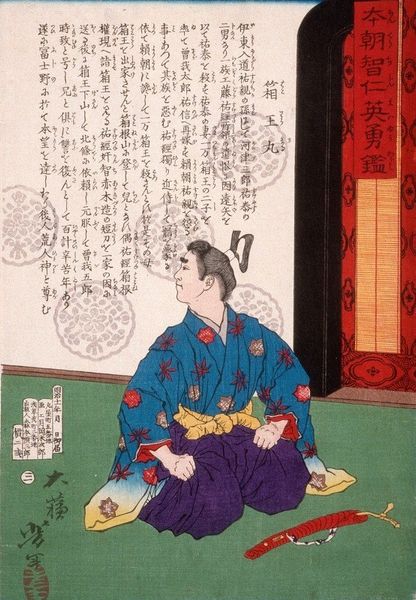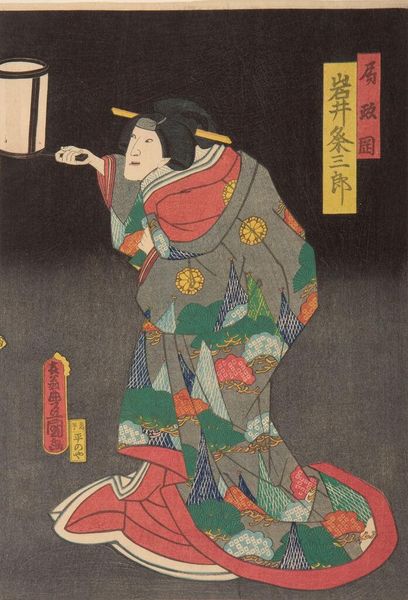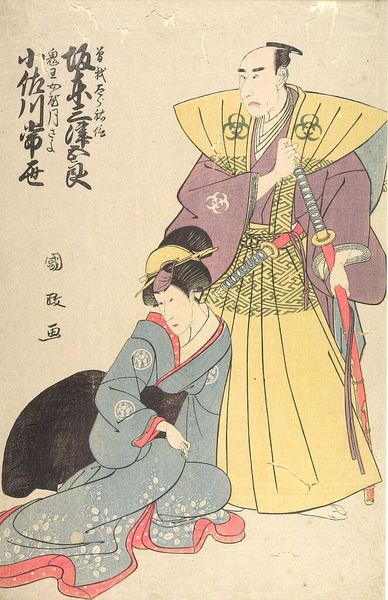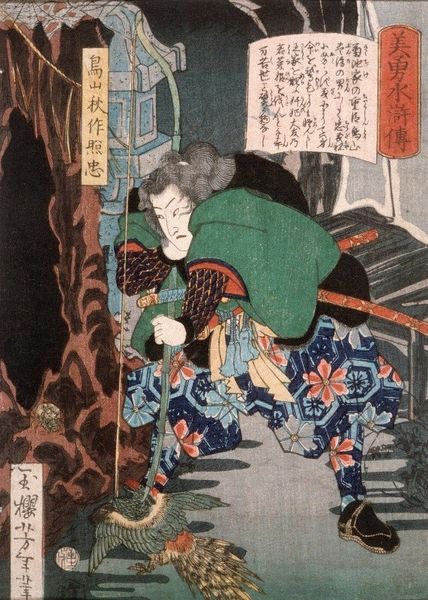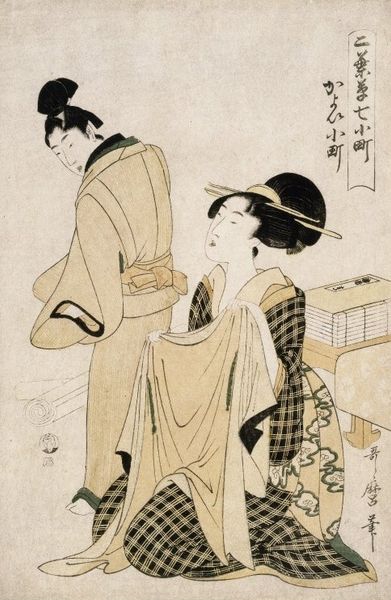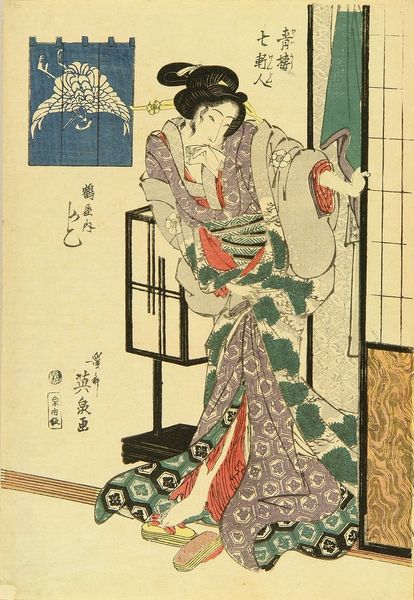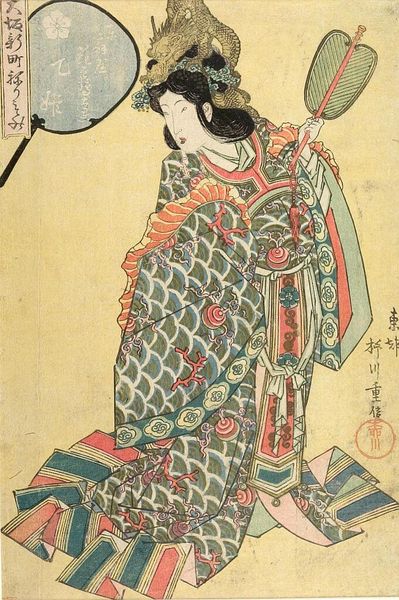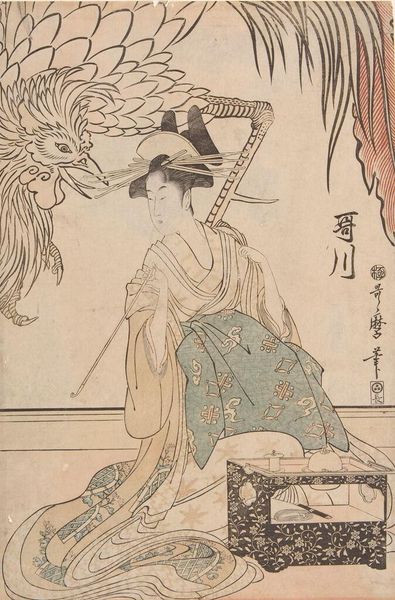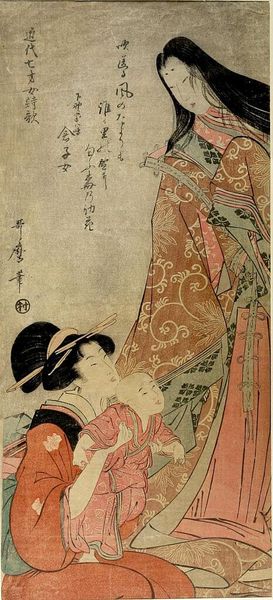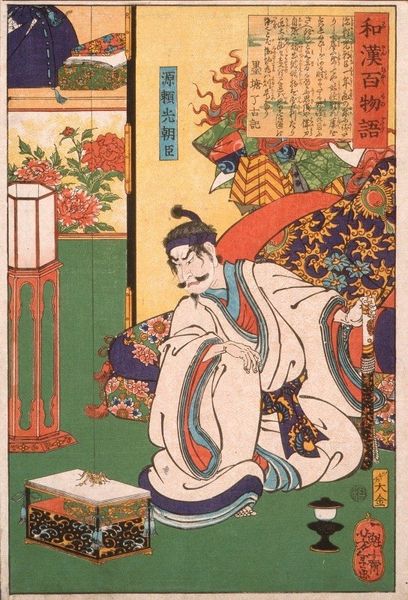
print, woodblock-print
#
portrait
#
narrative-art
# print
#
asian-art
#
ukiyo-e
#
woodblock-print
Copyright: Public Domain: Artvee
Curator: We're looking at "Nikki Danjō Naonori Changing into a Rat," a woodblock print crafted in 1865 by Tsukioka Yoshitoshi. The dark, almost oppressive, background immediately captures my attention, making the figure appear as if he is dissolving into shadow. Editor: Yes, a shadowy drama unfolds here! What’s compelling is the tension in the man’s pose— the strained neck, the almost unnatural positioning of the arm. It all feels symbolic, heavy with implied transformation. Curator: Indeed. Yoshitoshi masterfully uses the gradient of light and dark in the robes to guide the eye, particularly the white fabric pooling at the bottom that gives a stark visual anchor, leading directly to the rat. The pattern work is intricate; the radial designs contrast the solid blacks and browns. Editor: Rats often symbolize decay, ruin, or hidden danger, right? Seeing it there, nibbling at what appears to be a sacred scroll, I'm thinking about betrayal, loss of innocence or power. He seems poised on some edge of corruption, human to beast. Curator: Fascinating interpretation! I observe, too, the economy of line. Yoshitoshi doesn't waste a single stroke, achieving remarkable detail in the rat's fur, the man's facial expression. Note how he renders pattern to differentiate texture with minimum modeling to emphasize the flatness characteristic of Ukiyo-e tradition. Editor: Consider also, what the figure is looking at. There is no direct eye contact with the rat, or the audience for that matter. He is in his own dark space, consumed by something within himself which reflects that darker theme in the rat. The viewer and the character are left, then, on an eerie island. Curator: It's a powerful blend of observation and invention. Even with minimal shading, he’s conveying so much about form and even movement and narrative. It really captures this feeling of metamorphosis so masterfully through these techniques. Editor: This print is a somber reflection, less on the superficial grotesqueness of transformation, and more about its psychological implications and how the boundaries blur between the monstrous and the human within ourselves.
Comments
No comments
Be the first to comment and join the conversation on the ultimate creative platform.
